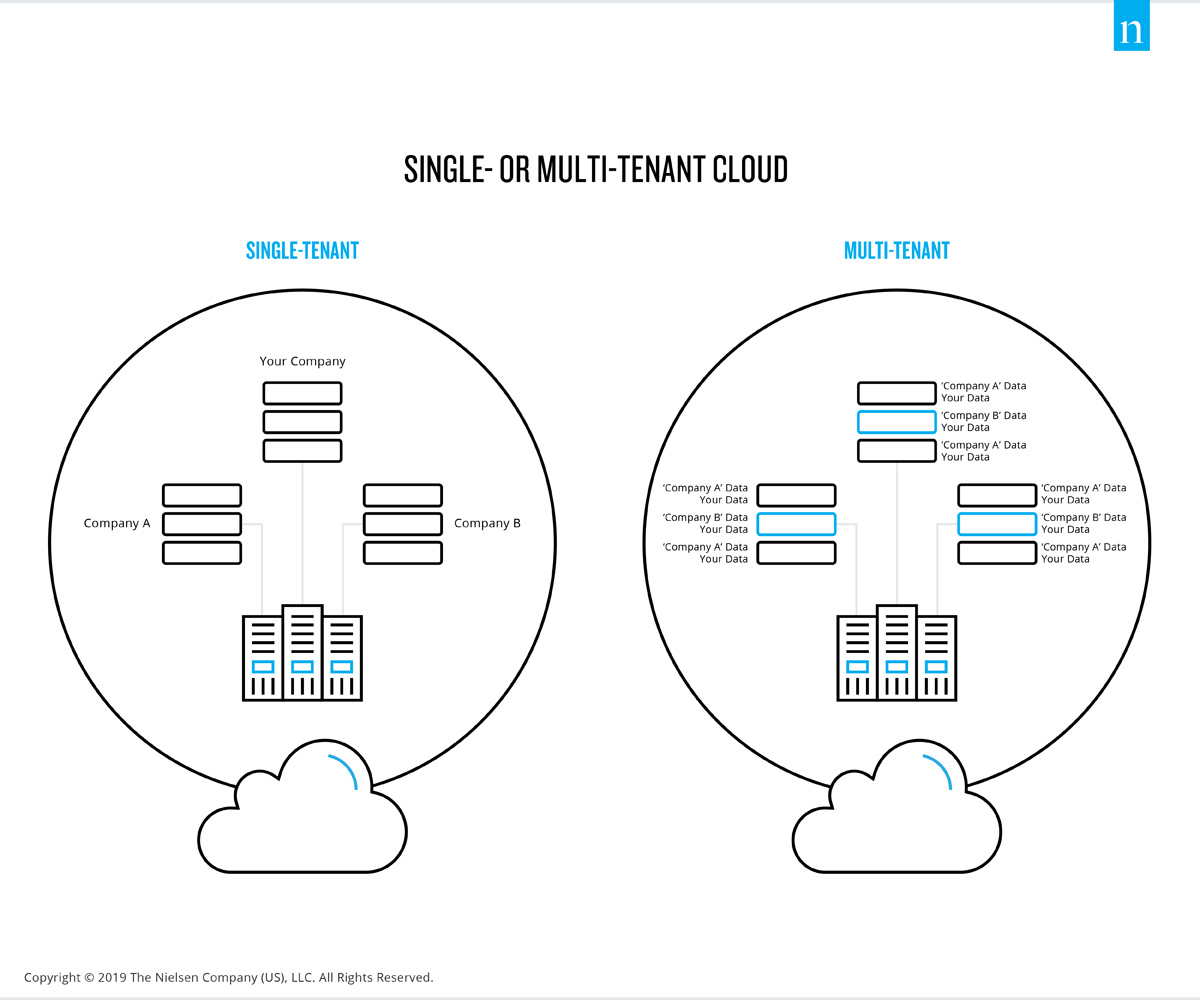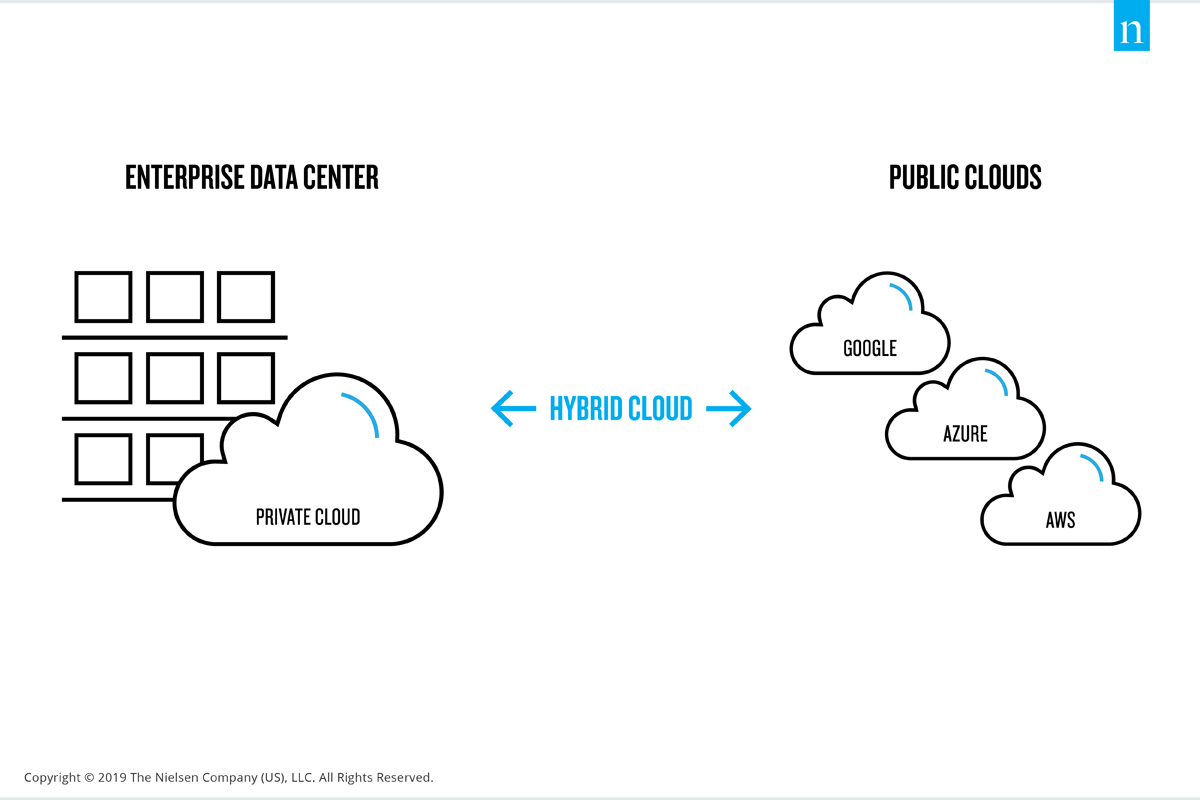What is ‘The Cloud’? Eye-opening facts about this transformation in tech

The “cloud.” You’ve heard it.
“We have it in the ‘cloud.’”
“We’re on the ‘cloud.’”
The “cloud” is a technology transformation that has been spreading like wildfire throughout the consumer packaged goods (CPG) landscape for a while now—a long while. But like many modern technology advancements, the term “cloud” isn’t self-defining. So, before we get into the many benefits of the cloud to your business, let’s define it.
Simply put, cloud computing means storing and accessing data over the internet instead of a physical hard drive. That doesn’t mean, however, that there is no hardware involved. When people and companies use a cloud, they’re essentially uploading or copying data to a data server via the internet. Those database servers are physical places where the data is stored on multiple hard drives to protect against data loss if anything happens to a specific server.
Aside from the fact that cloud services store data across multiple servers, there are many benefits to your business. For starters, the cloud provides a productive, scalable, and trusted service that delivers faster time to insight. At NielsenIQ, we realize the value the cloud can deliver to your business, as well as how it can help differentiate your products from your competitors. Like with any exciting technology transformation, we’re here to help you on your cloud journey. Let’s chat about the cloud—and why it can be a game-changer for your business.
You may not realize that you use a variety of cloud-based applications every day. In fact, you benefit from the cloud every time you send a file to a work colleague via the internet, use a mobile app, interact on social media, download an image, binge a Netflix show, or use OneDrive or GSuite. All these services are stored in the cloud and exist in some digital space. In the simplest terms, the cloud is your information, anywhere.

Whether the information is a Microsoft Word document, image, or a friend request on Facebook, it is no longer tethered to just one location like it was before the cloud. It’s in multiple places, is always accessible, and can never be lost. Today’s cloud is made up of multiple storage and data networks that seamlessly connect and talk to each other. In the past, your data was as vulnerable as the hardware it lived on. Today, your content lives virtually—making lost or destroyed data a thing of the past.
Different Types of clouds
Importantly, not all clouds are created equal. When technology companies say they have cloud technology, that can mean a number of different things. Cloud computing spans a range of classifications, types, and architecture models. First, let’s look at the two main types of clouds: single-tenant and multi-tenant.
- Single-Tenant Clouds: With single-tenant clouds, each customer has its own independent database and instance of the software. There is no sharing with single-tenant clouds.
- Multi-Tenant Clouds: With multi-tenant clouds, each customer shares the software application and a single database. However, each tenant’s data is isolated and remains private.
At NielsenIQ, we believe the multi-tenant cloud architecture provides the most benefits for your business. Multi-tenancy allows efficient servicing for small organizations, whose smaller scale doesn’t warrant a dedicated infrastructure, all the way to large organizations that need access to the cloud’s unlimited compute resources—all in one secure, private environment.

Now for the important computing model characteristics:
- Public Clouds: This refers to a model where the IT services are delivered across the internet. Public cloud vendors are responsible for developing, managing, and maintaining a pool of computing resources shared among multiple tenants from across the network. The public cloud offers a wide variety of choices in terms of solutions and computing resources to address the growing needs of organizations of all sizes and verticals.
- Private Clouds: This refers to a model that is dedicated for use by a single organization. The data center resources may be located on premise or operated by a third-party vendor off site. The computing resources are isolated and delivered via a secure private network and are not shared with other customers. Although the private cloud is customizable to meet the unique business and security needs of the organization, it’s proprietary to that organization, can be very expensive, and is not as easily scalable as a public cloud solution.
- Hybrid Clouds: This refers to a model that is dedicated for use by multiple organizations. Apps and data workloads share the resources between public and private cloud deployment based on your business’s policies around security, performance, scalability, cost, and efficiency. The environment is seamlessly integrated to ensure optimum performance and scalability to changing business needs.

How the Cloud can benefit your business
Now let’s talk data, the cloud, and you. At NielsenIQ, we are driven by a cloud infrastructure that provides the most benefits to your business. At NielsenIQ, powered by Microsoft Azure, we’ve adopted a public, multi-tenant cloud platform. We’ve seen the limitations that can come from companies offering private, single-tenant clouds. For example, private clouds require third-party partners to be setup on a private network, which introduces overhead, logistical latency, and most importantly, reduces the availability by device, location, or technology platform. Ultimately, we believe a multi-tenant approach offers the most end-to-end benefits to your business. Here’s why: The future of data and analytics is about activating insights without having to move data around. The movement of data creates costs, action lag, and further fragments the insights you’re trying to drive. Gone are the days of physically moving, extracting, and enriching the data in different systems. A public, multi-tenant cloud allows you to seamlessly share data in a secure environment.
We understand the power the cloud can bring to your business. So we’ve re-architected our CPG and retail products and moved them to a modern, Microsoft Azure-based cloud, with cloud-native components. Our tool can help you reduce time and money spent on preparing data for analysis by about 20%, and it can now connect all datasets at the source to facilitate fast, precise decisions.
Having a cloud-based platform for your business allows for a connected version of truth, which eliminates the need to reconcile data and analytic differences. Imagine a single, global platform that ensures your entire organization accesses the same core data that feeds off linked, predictive applications, powering all your users and markets to be in sync no matter where they sit. The consistent architecture, fed with the most complete and granular data sets, also enables faster analytics and ML/AI to be produced to scale optimally for the future. We’ve seen this come to life first-hand with our clients.
Yes, there are plenty of benefits to a public, multi-tenant cloud. But what about security? Security remains the No. 1 concern among companies considering the cloud, especially amid the many data breaches we’ve seen in the news in recent years. But there’s no need to worry. The first thing you should know is that Microsoft alone invests over $1 billion every year in security, including the protection of the Azure platform so that your data and business assets are protected. Next, even though the multi-tenant, public cloud supports multiple organizations, your data remains secure. So not only is the cloud safe, but there is security on a client-by-client basis.
The cloud is tech transformation that is paying back in spades through increased flexibility, improved collaboration and productivity, cost reductions, better data protection, improved availability, and expanded access to cutting-edge technologies. The cloud can save enterprises time and money while improving agility and scalability, all of which are important factors you need in today’s competitive landscape.
The benefits of the cloud are endless. But we like to hang our hat on words from NielsenIQ’s own Chief Technology Officer on the Connect platform, Arun Ramaswamy, who said, “The cloud today is table stakes for data engineering and AI, today’s DNA for rapid product innovation, and differentiation.”
That’s the power of the cloud.




